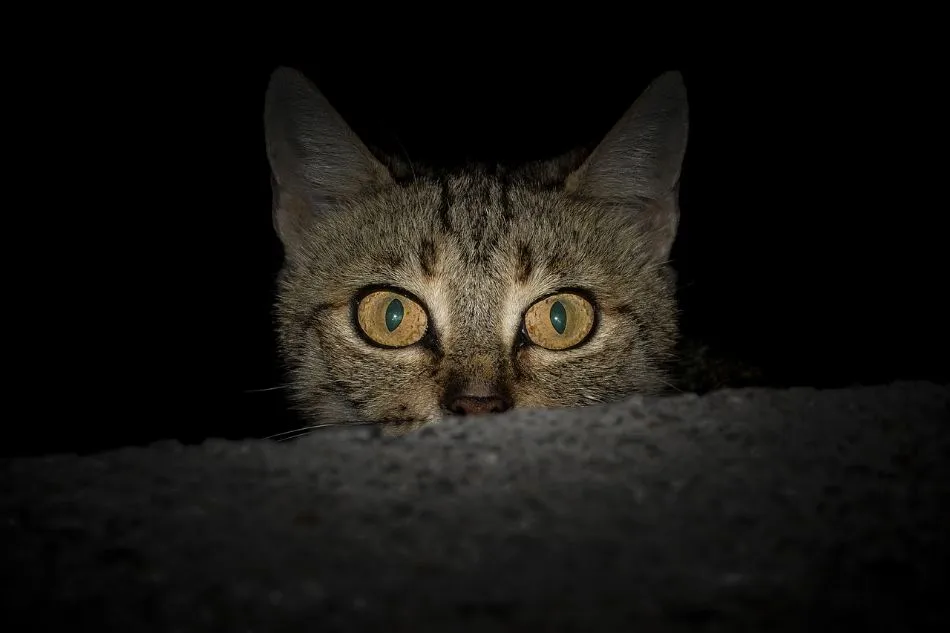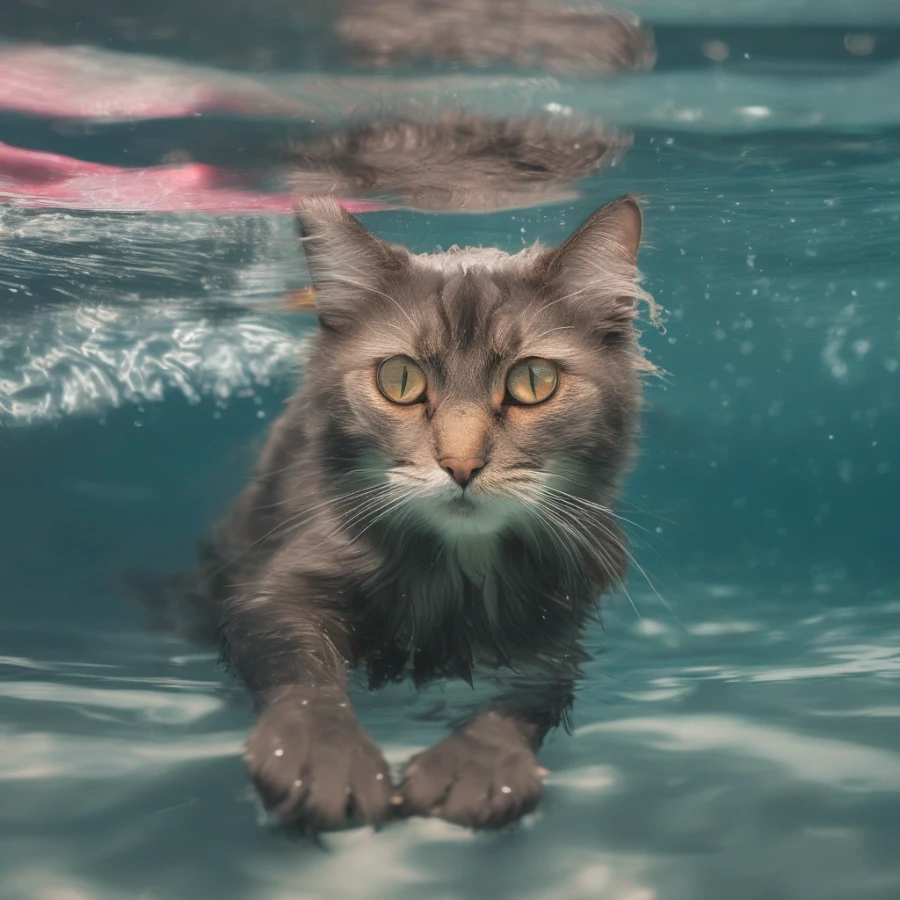Can Cats See in the Dark and How Well?

Published by: Tatsiana Korshik
Time to Read: 4 Min

Can Cats See in the Dark and How Well?
Yes, cats have excellent night vision and are well-adapted for seeing in low light conditions. They possess several physiological features that enhance their ability to see in the dark:Large Pupils: Cats have large pupils that can open wider than those of humans or many other animals. This allows more light to enter their eyes, maximizing their ability to gather available light.
Tapetum Lucidum: Cats have a reflective layer called the tapetum lucidum located behind the retina. This structure reflects light back through the retina, giving it a second chance to stimulate the light-sensitive cells. This enhances their visual sensitivity in dimly lit environments.
Rod Cells: Cats have a higher number of rod cells in their retinas compared to humans. Rod cells are responsible for detecting light and motion but are less effective at distinguishing colors. The abundance of rod cells enables cats to perceive even small amounts of light and see better in low light conditions.
Adaptation to Low Light: Cats have a remarkable ability to quickly adapt their vision to varying levels of light. Their eyes can adjust rapidly between bright light and darkness due to the efficiency of their retinas and the iris muscles that control the size of their pupils.
While cats have exceptional night vision, it is a common misconception that they can see in complete darkness. Like any other animal, they still require some amount of ambient light to see properly. In extremely dim or pitch-black conditions, cats rely more on their other senses, such as their acute hearing and ability to detect movement.
It's worth noting that individual cats may have slight variations in their visual abilities, and factors like age, health, and breed can also influence their vision to some extent.
Should I leave the light on for my cat?
Whether to leave a light on for your cat largely depends on the specific circumstances and the individual needs of your cat. Here are a few factors to consider when deciding whether to leave a light on:Safety and Navigation: If your cat tends to be active during the night or early morning, leaving a dim light on can help them navigate their environment safely. It can prevent them from bumping into furniture, tripping over objects, or feeling disoriented in the darkness.
Anxiety or Fear: Some cats may experience anxiety or fear in the dark, especially if they have had negative experiences or are prone to being more nervous. In such cases, leaving a soft light on can provide a sense of security and help alleviate their anxiety.
Sleep and Circadian Rhythm: Cats are crepuscular animals, meaning they are most active during dawn and dusk. For their overall well-being, it's important to provide them with a dark and quiet environment during their designated sleep times. If the light you leave on disturbs their sleep or interferes with their natural circadian rhythm, it may be best to turn it off during those periods.
Personal Preference: Cats are individuals with unique preferences. Some cats may feel more comfortable in complete darkness, while others may prefer a bit of ambient light. Observe your cat's behavior and see if they appear more relaxed or at ease with or without the light on.
If you choose to leave a light on, consider using a nightlight or a low-intensity light source that won't be overly stimulating or disrupt your cat's sleep patterns. It's also important to ensure the light is safe and securely positioned to prevent any potential accidents or hazards. Ultimately, it's best to observe your cat's behavior, assess their needs, and make adjustments based on what seems to provide them with the most comfort and well-being. Consulting with a veterinarian can also provide you with specific guidance based on your cat's individual circumstances.
How cats see the world
Cats have unique visual abilities that differ in some ways from how humans see the world. Here are some key characteristics of feline vision:Night Vision: Cats are well-known for their exceptional night vision. They have a larger number of rod cells in their retinas, which are highly sensitive to light and motion. This allows them to see in much lower light levels than humans can. Additionally, their tapetum lucidum, a reflective layer behind the retina, helps amplify available light and enhances their night vision.
Peripheral Vision: Cats have a wider field of view compared to humans. While humans have around a 180-degree field of vision, cats can see approximately 200 degrees. This wider peripheral vision allows them to detect movement and objects at the edges of their visual field more easily.
Depth Perception: Cats have good depth perception, which helps them judge distances accurately. This ability is crucial for activities such as hunting and leaping. Their eyes are positioned on the front of their heads, providing some overlap in their visual fields and enabling them to have stereoscopic or binocular vision.
Color Vision: Cats' color vision is not as vibrant as that of humans. They have fewer cones, the cells responsible for detecting colors, in their retinas. Cats primarily see the world in shades of blue and green, with limited ability to perceive reds and oranges. However, recent studies suggest that cats may have some ability to see certain shades of red.
Focus and Acuity: Cats have excellent visual acuity, allowing them to see fine details and small movements. They have a higher concentration of cones in the central part of their retinas, known as the fovea, which provides sharp focus and precise vision in the center of their visual field.
Motion Detection: Cats have a heightened ability to detect motion due to their higher number of rod cells. They can perceive subtle movements and changes in their environment, making them skilled predators.
It's important to note that while cats have remarkable visual capabilities, their vision is adapted to their specific needs as predatory animals. Understanding how cats see the world can help in providing an environment that meets their visual requirements and enhances their overall well-being.



